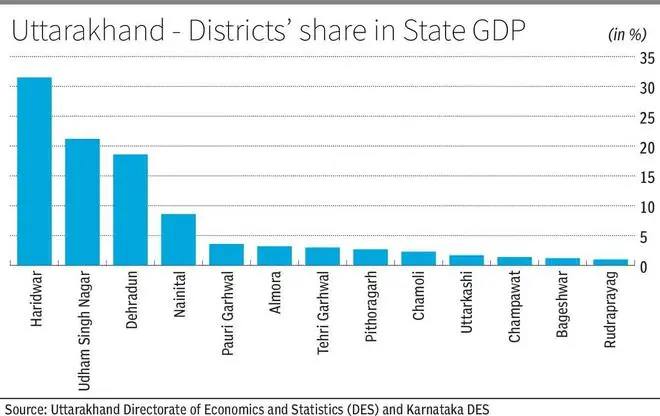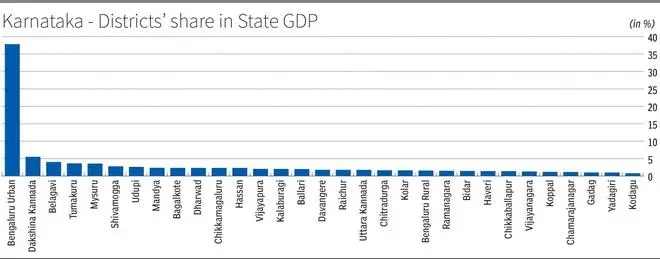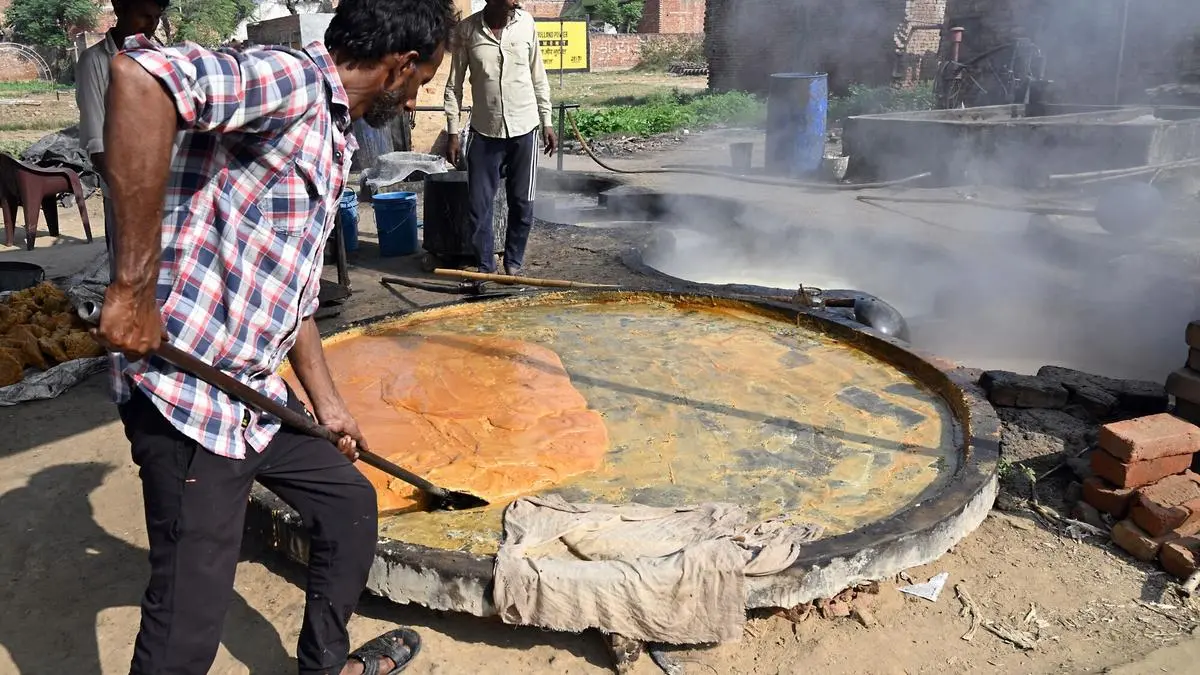India’s robust GDP growth is often celebrated as a sign of economic vitality. But this headline number hides a more complex reality: an analysis of district domestic product (DDP) data across States demonstrates that India’s economic activity is driven disproportionately by a handful of districts, while vast regions remain economically marginalised.
Without a sharper focus on district-level development, the benefits of growth will continue to elude large parts of the country.
Concentrated Prosperity
Recent district domestic product (DDP) data from States reveal striking inequalities. For instance, in Uttarakhand, three districts — Haridwar, Udham Singh Nagar, and Dehradun — collectively generate 71 per cent of GSDP, leaving the remaining 10 districts with less than 30 per cent combined (see Figure 1).

Karnataka displays an even starker imbalance: Bengaluru alone generates 38 per cent of the State’s Gross State Domestic Product (GSDP), while the next highest contributor, Dakshina Kannada, contributes merely 5.5 per cent (see Figure 1).

In Maharashtra, four districts and divisions — Mumbai, Thane, Pune and Nagpur — account for over 60 per cent of the State’s total output.
Even in Madhya Pradesh, a State with relatively less skewed development, Indore contributes 6.7 per cent to the GSDP, far above the State average of around 2-3 per cent per district.
These patterns are not exceptions; they are the norm. Across States, the top 10 per cent of districts typically drive a disproportionate share of 50-60 per cent of the State’s economic output, highlighting that hundreds of rural and semi-urban districts contribute only marginally to the State’s output and growth.
Impact of Concentration
Such concentration of economic activity has profound social and economic consequences. For instance, concentrated economic opportunities fuel large-scale migration toward a few urban centres, exacerbating housing shortages, infrastructure deficits, and informal employment in fast growing destination cities in the districts with faster economic growth.
Further, lagging districts see lower investments in human capital and infrastructure, trapping them in low-productivity equilibria and widening spatial income inequalities over time. Finally, aggregated GDP numbers at the State or national level mask within-State divergences. Without granular visibility into district-level economies, policy interventions risk misallocated resources and actions poorly sequenced.
Limits of DDP Estimation
In many States, the district-level economic data is not directly measured. Instead, State GDP is divided among districts using outdated estimates. This does not reflect current actual economic activity.
For example, Bengaluru alone generates 38 per cent of Karnataka’s economy, thanks to its strong tech and services sectors, but it is possible that old methods of extrapolation are not accurate.
Similarly, in rural or less developed districts a lot of informal work, like small scale manufacturing or local services, is not counted because we don’t have regular surveys for these areas.
Hence, policymakers are left with a misleading view of how each district is really doing. This is not to suggest that regional inequalities are overstated; rather, it is more the case that their true extent and nature is not understood.
District-led development
Addressing these gaps requires a fundamental shift toward a bottom-up statistical infrastructure. District-level economic measurement must become an annual, systematic exercise, grounded in robust primary data collection. This would include sectoral Gross Value Added (GVA) metrics, disaggregated to capture agriculture, manufacturing, services, and the unincorporated sector of economy in each of these sectors.
Regular surveys of unincorporated enterprises and labour force participation at the district level are essential to measure the contribution of this unincorporated sector which plays a dominant role in these economically backward districts. Additionally, integrating this data into real-time dashboards would enable policymakers to track growth dynamics, employment generation, and productivity trends with greater granularity.
Given the size and heterogeneity of States, the district — not the State — should increasingly become the operational unit of development planning. District-led development strategies must be grounded in sector-specific growth plans tailored to local endowments, resource bases, and demographic trends.
Targeted investments in lagging districts, designed on the basis of granular data, can help decentralise the geographic distribution of growth and create opportunities closer to where people live and would help in unwanted migration to a few cities.
Incentivising States to invest in better district-level data systems — potentially linking these efforts to central funding frameworks — could create positive feedback loops between measurement, planning, and outcomes.
Moving Forward
Headline GDP growth should not lull us into complacency. Beneath the surface, India’s economic geography is deeply uneven, and these inequalities, if left unaddressed, will undermine the sustainability and inclusiveness of the country’s growth story.
Building a real-time, bottom-up statistical infrastructure for district economies is not merely a technical exercise. It is foundational to realising that India’s future prosperity will depend not only on the aggregate speed of its growth but on “inclusive growth” across all 806 districts that form the bedrock of the nation.
The writer is Associate Fellow, Pahlé India Foundation
Published on May 23, 2025
Anurag Dhole is a seasoned journalist and content writer with a passion for delivering timely, accurate, and engaging stories. With over 8 years of experience in digital media, she covers a wide range of topics—from breaking news and politics to business insights and cultural trends. Jane's writing style blends clarity with depth, aiming to inform and inspire readers in a fast-paced media landscape. When she’s not chasing stories, she’s likely reading investigative features or exploring local cafés for her next writing spot.






